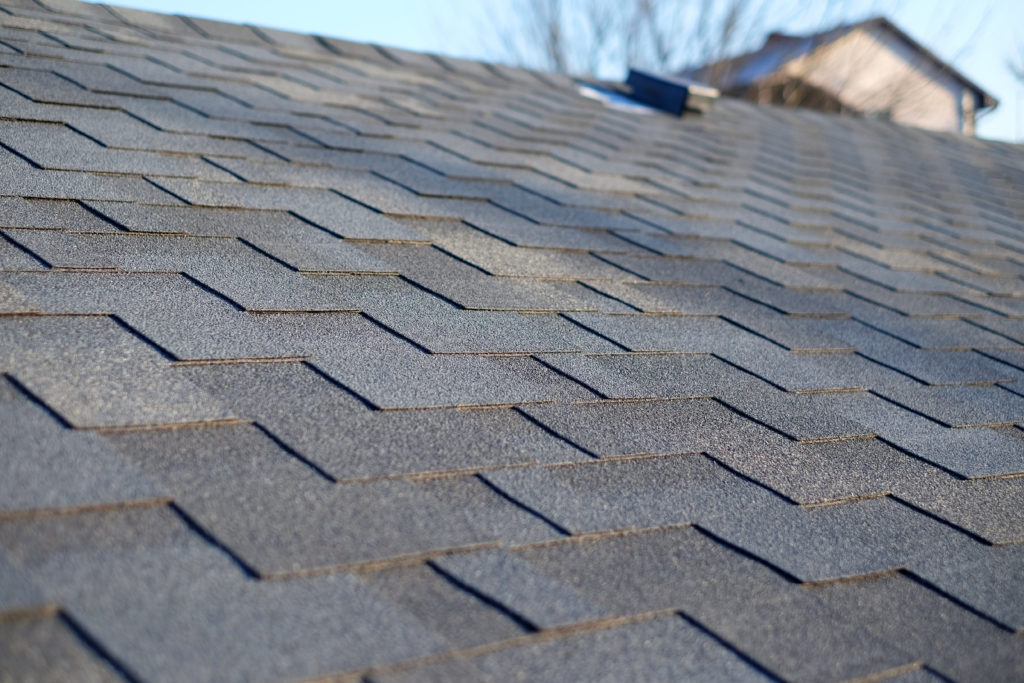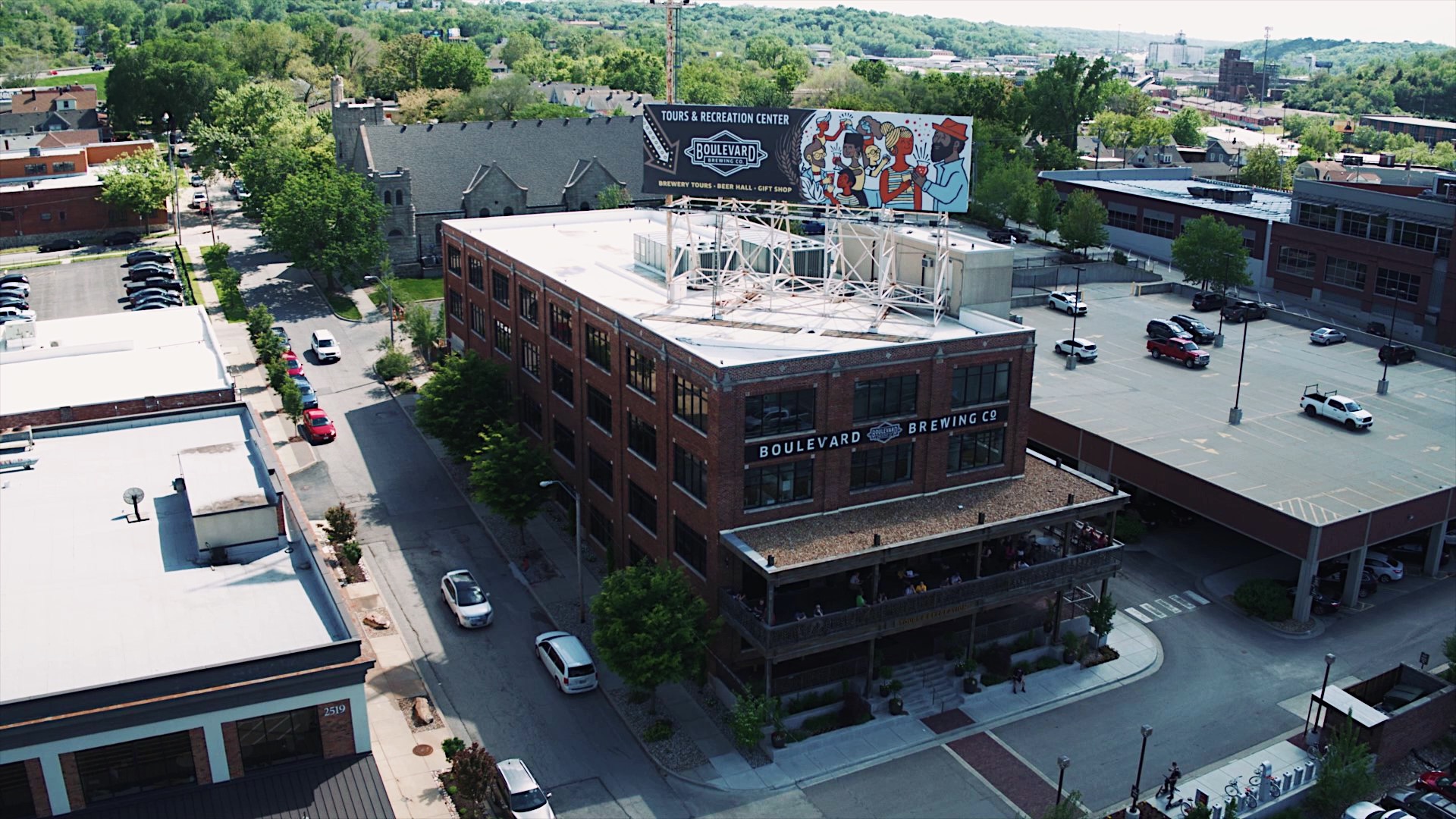A Guide to All the Different Types of Roofs

Bitumen tile roof. Roof Shingles – Roofing. Close up view on Asphalt Roofing Shingles .
When it comes to the variety of types of roofs available in the world, the possibilities are endless. There are two primary types of roofs, sloped and flat. Unless you have a modern or mid-century home, chances are you have a sloped roof. Do you know if it’s a Gambrel roof? Crossed Gable roof? Mansard roof? If you don’t, you’re in luck because I’m about to tell you that and a whole lot more.
A sloped roofs is the most common type of roof in the residential sector, but what kind of slope does it have and why is it important? The shape of your roof adds an aesthetic appeal and more importantly helps shed water from your home. The most common types of roofs you will see are gable and hip.
- A Gable roof is a basic triangle that stretches the expanse of your home. It isn’t elaborate and it doesn’t try to be pretty, but it is efficient and affordable when building a home.
- A Hip roof is slightly more complex. These allow water to run off in all four directions of your home. This then allows water to leave your roof faster and more efficiently. They do, however, require more complexity in the structure of rafters needed to support them.
- Gambrel Roofs are less common and were extremely popular in 17th and 18th century architecture. You will find this style today on barns and on the older homes primarily located in the North-East of the United States. The benefit of this style is that it gives the owner more space inside the building.
- There are dozens of different structures of roofs, to save time, I will share this last one before moving on. Mansard roofs are similar in shape to Gambrel roofs but shed water in all four directions. Mansard roofs were popularized in the late 17th century in France and are seen today world-wide. The style incorporates the same shallow angled pitch near the peak and a dramatic drop as it approaches the edge.
Now that you can professionally identify the most common roof shapes in the world, how do you cover them? The most common covering for a sloped roof is shingle. Shingles come in a wide variety of colors and materials.
- Wood shingles have been used for centuries and were the most affordable and efficient option over that same span of time. Cedar shingled roofs can still be warranted for up to 25 years and look fantastic. However, due to the raise in material prices and the introduction of asphalt to the market, many have turned away from this style.
- Asphalt shingles are lightweight, efficient, and affordable. They require less heavy lifting and can be easily repaired. It also is one of the most sustainable options on the market as it can be easily recycled. With all these positive characteristics, though, it can come with its own unique drawbacks. They lack the structural integrity you get with slate, wood shingles, and aesthetically add little dimension to the roof.
- If you’re looking for functionality, protection, and style, slate is what you want. Slate roofs provide a strong and durable layer to your roof. The natural look of slate has become popular and highly sought after in today’s residential market. The major concerns with slate roofs are the cost and the dead load it adds to the structure of your home. Other types of shingles include, but are not limited to: Terra-Cotta, Faux Slate, Metal Shingle, etc. These are far less common but still could be viable options for achieving the roof you want.
So now that you know what type of roof you have and how to cover it. That is unless it’s flat… Don’t worry, I’ve got you. Flat roofs are most seen in the commercial sector of roofing. Why can’t you use shingles? With asphalt you can, however, this is becoming much less common. On a flat roof there is a slight built in slope, but your shingles would be submerged and uneven leaving them exposed to a higher level of oxidation and ultimately deterioration. Luckily, there is a fix for that. Membrane roofing is efficient and technologically superior, with several options.
- TPO (Thermoplastic Polyolefin) is the most common type of membrane used today. It is the most affordable of the major membranes and it is a light color (white) that reflects the sun and its heat. Its major downfall is that over time it tends to shrink and pull away from seams and structures on the roof.
- PVC (Polyvinyl Chloride) is a widely used synthetic plastic polymer. PVC membrane is known for its ability to withstand bacteria, chemicals, and animal fats making it the best choice for restaurants, hotels, and processing plants. Since it has been around a while it has many different color options. The negatives of PVC systems include the faster weathering of certain plasticizers and the price being higher than its main competitor (TPO).
- EPDM (Ethylene Propylene Diene Monomer) is a synthetic rubber. It has a higher elasticity and has better elongation properties than TPO and PVC. As the only major membrane that is a dark color it has been touted as the best option for colder climates for years. Recent studies have proven otherwise. In high heat the membrane tends to separate from seams and in colder climates where it was originally recommended, it is covered by snow most of winter, turning it into a white roof. With those major membranes under your belt, you are ready to roof your structure.
So how do you install these membranes? The common methods of attachment are adhered, mechanically attached, and ballasted. Each method has its benefits and detriments, but all are commonly used and have their seat at the table.
- Adhered roofs are used when the environment allows for the correct temperature and drying times to be achieved. The benefits of this system are that there are no fasteners penetrating the system, they provide better wind uplift ratings, they are easier to service if there is a leak, and they typically have a lower cost of ownership. Adhered systems typically cost more due to the price of adhesives and must be installed in certain conditions.
- Mechanically fastened systems account for about 80% of the market today. They are the most affordable and easiest to install. Mechanically fastened systems can be easily verified and inspected. Issues arise in this system due to the volume of holes you’re putting through your membrane. Since the membrane isn’t in constant contact with the insulation below you may experience fluttering. Fluttering occurs when wind penetrates the system and separates the membrane from the insulation below. More commonly you see fluttering attributed to changes in pressure between the building and the exterior. As a system billows over time, it applies stress to the fasteners and can lead to system failure.
- Ballasted Roofs are systems where you can loosely lay your insulation and membrane and then cover them with “ballast”. The most common form of ballast is river rock. This provides a non-penetrating roof system with excellent hail and fire resistance. The negatives associated with this style of roof are weight and difficulty finding leaks. The sharp corners from fractured rocks can also penetrate the membrane on occasion. Ballasted roofs are ideal for the up-and-coming trend of “Green Roofs.”
With more people moving to cities there is a growing need for housing, parking, recreation, and general living space. Maximizing space has become the goal of many developers and the most common underutilized space on a building is the roof. Green roofs or garden roofs come in many forms but are generally organized into 3 types:
- Extensive– Extensive green roofs are typically the easiest to design and install. Pre-loaded trays of vegetation are set into a paver like system and require the least maintenance. This is the most lightweight and shallow of the three, lending itself to be the easiest to maintain and most affordable.
- Semi-Intensive– As the name denotes, this system is a blend of Intensive and Extensive. Semi-Intensive roofs incorporate larger plants like shrubs, trees, and bushes but only to an extent. This style pairs well with paver systems and roof top decking to create a functional and aesthetic rooftop patio.
- Intensive– The most intricate and complex form of green roof is the Intensive roof. Intensive roofs require extensive design and collaboration. This system allows the largest variety of vegetation and can turn the roof into the coolest part of the building. Intensive systems require more growth media, filtration, root barriers and irrigation than the other two and for those reasons it costs more to attain.
So now you can identify the shape of your roof and how to cover it, what’s next? Selecting a contractor is the single most important thing you can do when looking at a new roof. Here are a few things you should look for:
- How long they have been in business? If they have been around a while, then there is a reason. Newer contractors may be good but for such a high-priced renovation, why risk it?
- Are they licensed and insured? If not, stay away. Legal fees add up faster than roofing costs.
- Get any agreements in writing. Sadly, there are contractors that care more about profit than integrity.
- Ask about the warranty. Most contractors offer a warranty, make sure you get the best you can.
- Be up front about your expectations and do not be afraid to contact them if you are unhappy with your service. In my experience most contractors don’t start their business to make people unhappy.
- Ask if the contractor is an “Authorized Installer”. This means the manufacturers think the contractor is good enough to represent their brand and often have the best warranties and workmanship.
If you want an honest and accurate roof estimate and experience, contact JR & Co. today!
